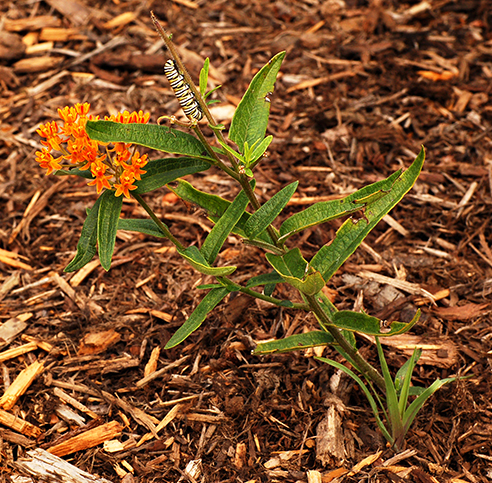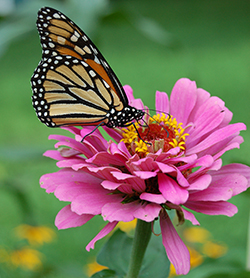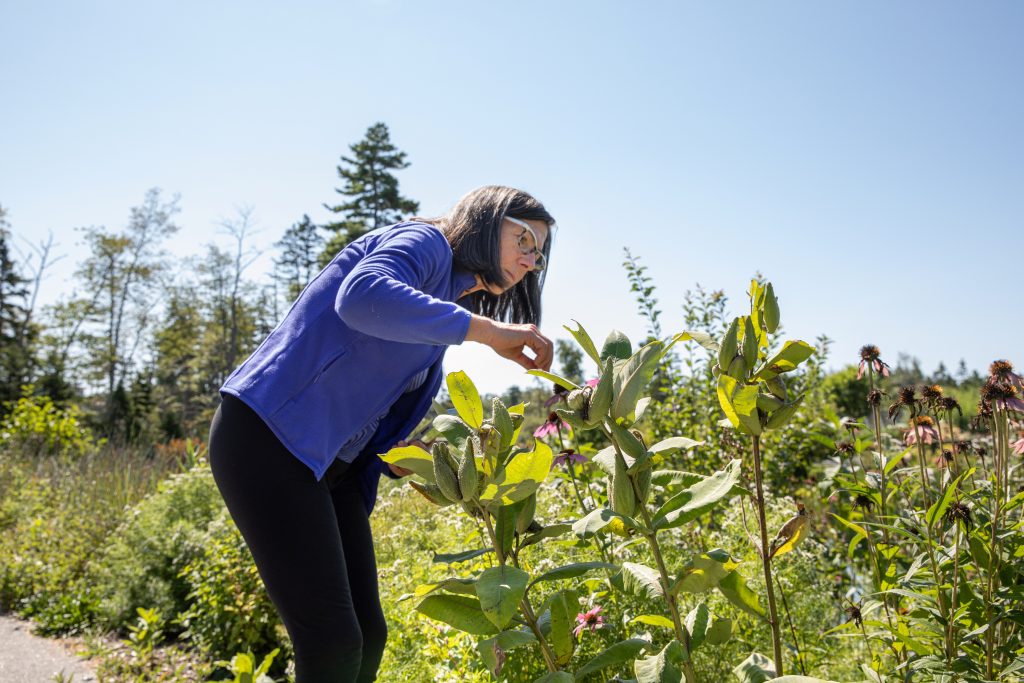Over the past few years there has been a dramatic decline in the monarch butterfly population. This has been caused by a variety of things, including loss of milkweed, drought conditions, pesticide, and habitat loss. Although some of these dangers are natural and can’t be avoided, there are ways to help out from home. So, how can you help the monarchs?
A crucial part of the monarch’s survival is their access to milkweed, so planting a form of native milkweed would be a great help. Monarchs start their life on a single leaf of milkweed, relying on it to develop and grow. Milkweed also serves as protection: the toxins monarchs receive from eating the milkweed make the butterflies poisonous to many predators such as birds. To help fight the loss of milkweed, you can plant milkweed native to your area.

Here at Coastal Maine Botanical Gardens there are two main types: first, swamp milkweed (Asclepias incarnata), which prefers watery places such as areas around swamps and lakes; and second, butterfly milkweed (Asclepias tuberosa) which prefers drier areas.
Monarchs are also dependent on nectar plants for the energy to make their adventure up the continent. Planting nectar plants is not only a great way to help the monarchs, but these plants can also brighten up your garden. There are a large variety of plants and flowers that the monarchs benefit from. Popular choices that monarchs love are: aster (Aster spp.), cardinal flower (Lobelia cardinalis), coneflowers (Echinacea purpurea), lantana (Lantana camara), marigold (Tagetes spp.), Mexican sunflowers (Tithonia rotundifolia), tall verbena (Verbena bonariensis), zinnia (Zinnia elegans), and the butterfly bush (Buddleja).

While planting, remember that butterflies prefer warm sunny areas and avoid using pesticides. Monarchs also need flowers during all points of their migration, so plant some flowers that bloom during the fall season if you live further south along the migration trail.
Along with planting milkweed and nectar plants you can also adapt your garden to make it more butterfly friendly. Try to garden organically. Even though pesticides can help control pests, it can also harm helpful creatures such as monarchs. You can also give the butterflies a place to rest by placing some flat stones in sunny places throughout your flower gardens. Another way to help is to provide monarchs with extra food and water. Providing water can be as simple as having mud puddles or providing a small bucket filled with moist sand. To feed the butterflies, you can either buy a feeder with a butterfly food sugar mix or you can make your own by soaking a sponge in a mixture of 20% honey and 80% water.
Creating your own butterfly friendly habitat is a simple way to help stop the decline in their population. The number of monarchs overwintering in Mexico during the 2015-2016 season was 200 million – compared to the long term average of 300 million, that’s 30% less butterflies. By adapting your garden, planting milkweed, or investing in some nectar plants, not only will you get to see the monarchs more but you will get to help save them.
— Lisa Pawlowski, marketing mentorship student
